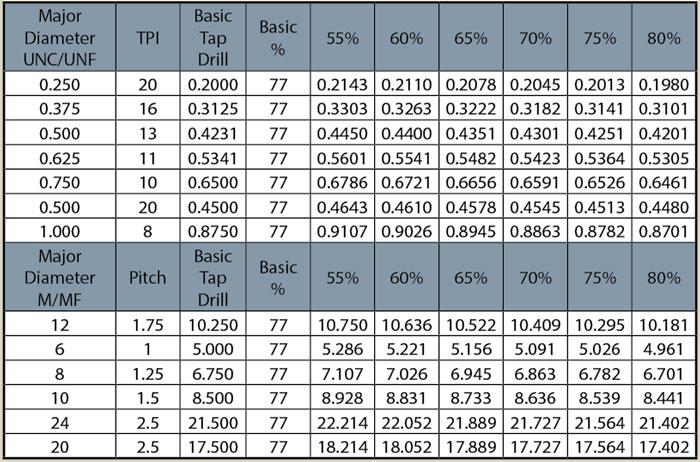


As the name suggests, a spiral flute tap utilizes channels that spiral around the tap body in a helical form. Spiral flute taps differ from straight flute taps due to their flute construction.

Material: The materials used in tapping will make a difference in the type of thread tap you choose.These fluting types can be valuable, depending on whether you’re tapping a blind or through hole. Different flute types allow taps to either push chips ahead of the tool or draw them up and away from the tool. Fluting needs: Many thread taps have channels - known as flutes - cut into the body to guide chips away from the tapping site.The shape of your thread tap will need to accommodate the hole type to prevent breakage. Blind holes extend to a specific depth without breaking through the other side of a material, whereas through holes breach the other side. Hole type: Your CNC tapping capabilities will depend on whether the hole you’re threading is a blind or through hole.Different taps may be appropriate depending on some of the following project specifications: Types of Thread Taps Used in CNC MachiningĪ thread tap’s construction can provide advantages depending on your project.

Let’s take a look at common thread taps you’ll want to consider. The right tap choice can help prevent frustrating tap breakage that may set you back on a component you’ve already poured hours into. Understanding each tap’s capabilities can help you narrow down what may work best in each situation. There are several different types of thread taps to accommodate your CNC machining needs. This concept is simple, but choosing a thread tap can be complex. Thread taps create the female portion of a pair of metal fasteners, which prepares a material to be used with a male component like bolts or screws. Though engineers and machinists utilize thread taps for a wide range of applications, their purpose is fairly standard. Open and Closed Cell Sponge Rubber Die Cutting.


 0 kommentar(er)
0 kommentar(er)
